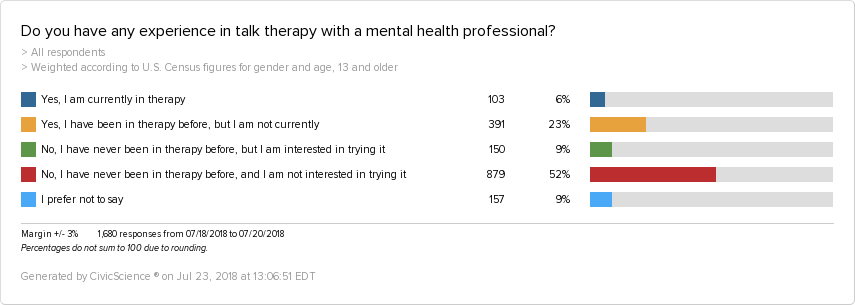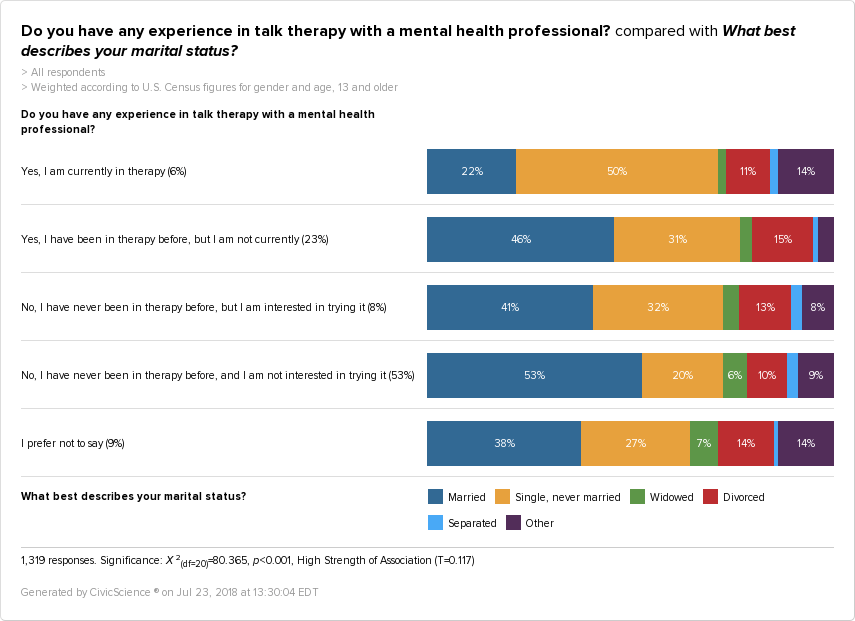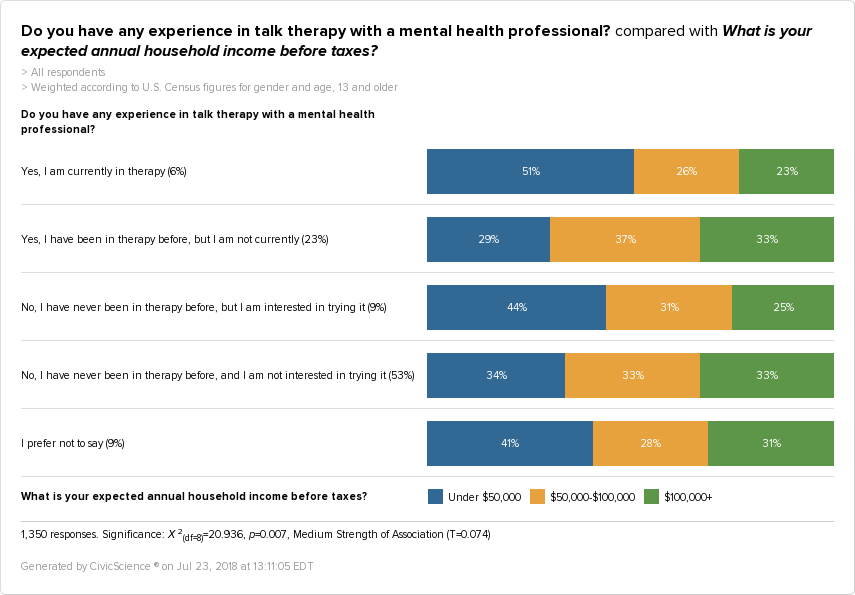Talk therapy is not a new concept, and, as it turns out, not a very popular one. CivicScience asked 1,680 Americans about their experience with therapy and found 6% of individuals aged 13 and older are currently in therapy. This percentage pales in comparison to the 23% who formerly attended and the 52% who have never been. 9% of respondents have an interest in therapy, and 9% would prefer not to say.
The stark divide between those who attend therapy and those who have no interest indicates that therapy and the larger discussion of mental health may be incredibly divisive.
As the data reveals, that division is evident in the context of gender. 62% of the individuals currently in therapy, as well as those who have expressed an interest in therapy, are women.
By contrast, only 38% of men can say the same. Additionally, men comprise 56% of those who have not been in therapy and who have no interest in trying it.
This gender divide could pose some challenges for men and women in a relationship with each other. Women in therapy may be gaining useful skills in communication and processing that their male counterparts may not receive outside of a therapy session, leading to diverging ways of dealing with emotions and events. How this plays out in a committed relationship is not clear. However, we can look to rates of therapy and marital status to gain a better understanding.
Of those currently in therapy 50% are single, never married. 53% of those with no interest in therapy are married. This suggests that marriage plays a role in the use of therapy as a tool for processing, especially since those who are married are far less likely to be currently attending therapy.
Only 22% of married respondents are currently in therapy. However, 46% of those who are married used to attend. Has marriage more than doubled the therapy drop-out rate? There are, of course, many factors that go into one’s commitment to therapy, but the data indicates that marriage could be one of them.
Given the largely single demographic attending therapy, it may come as no surprise that there is a generational skew as well. Millennials make up the largest percentage of therapy attendees, with Generation X not far behind.
These two age groups are arguably experiencing some of the most challenging life stages. However, they have also come of age in a time when talking about feelings is considered a healthy and necessary part of life–a big leap from the environment Baby Boomers may have known, where feelings held less importance.
It is also important to note the strong showing of Generation Z in terms of therapy attendance. As this group matures into adulthood and gains greater agency to make personal decisions, such as whether or not to see a therapist, it may turn out to be the most therapy-savvy demographic yet.
Access is often one of the key obstacles to those seeking a variety of health services. However, as the data reports, 51% of those currently in therapy are earning less than $51,000 a year. Of those who are not interested, the percentages are fairly even across income levels. These figures could indicate that cost may not be a deterrent to attending talk therapy, after all.
Ultimately, despite fairly equal access to talk therapy, there may be other factors that contribute to who ends up sitting across from a therapist. The oft-gendered notion of talking about one’s feelings, the increased commitment to another person that comes with marriage, and the emotional environment in which you grew up, all carry the potential to attract or detract an individual from considering talk therapy a viable option.













